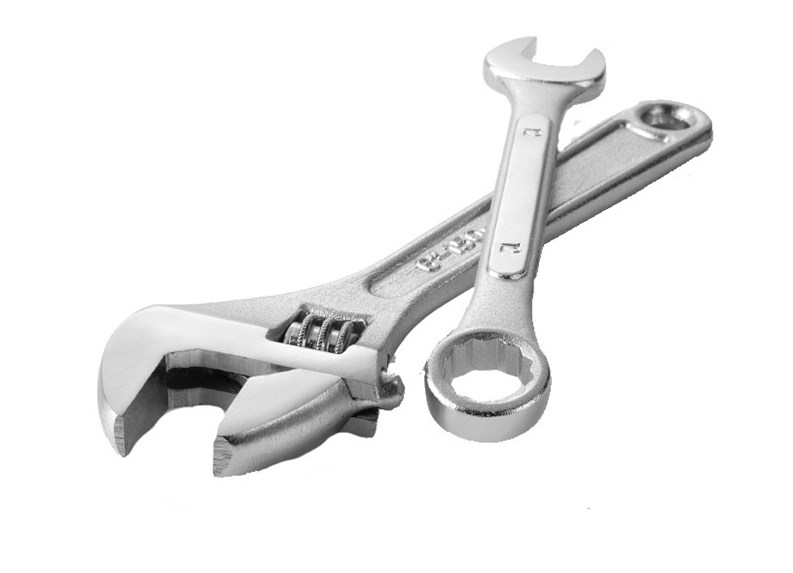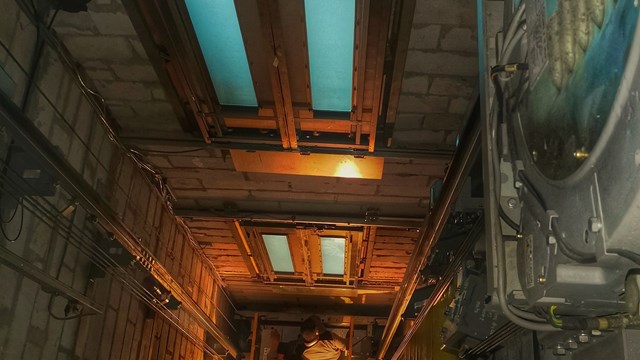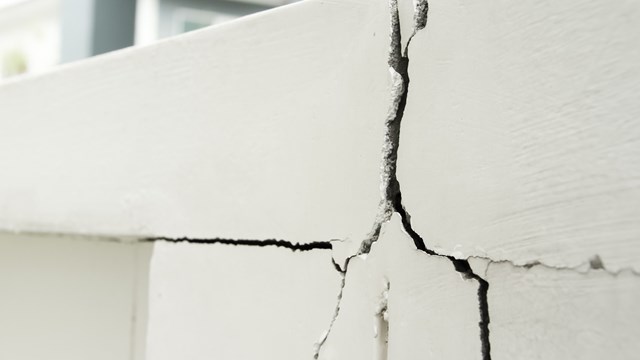Admit it: We take elevators for granted. Like answering machines or calculators, elevators are one of those conveniences that are so woven into the texture of our lives that we're barely aware of them at all - that is, until they go on the fritz - at which point we're rudely reminded of just how dependant we are. Whether you've got a pre-war manual with open grillwork or a stainless steel box rigged with bleeding-edge technology, it's crucial that you keep things running smoothly. Simply put, nothing will make your building seem worn at the edges faster than a sickly lift.
An elevator needs constant love to keep it working properly. So your first line of defense is a basic maintenance contract. Kenneth Breglio, of BP Elevator Company, a Bronx-based firm that installs and maintains elevators, suggests monthly or bi-monthly service visits, depending on the model and age of your machinery. A typical service contract should run about $3,600-$5,000 per year for a small, one-elevator residential building, he says. Make sure to go over what's included in your maintenance agreement before you sign. "A routine maintenance call should include cleaning, lubrication, adjustments on relays, and a general once-over to make sure everything's in order," Breglio advises. It's also wise to look for a company with experience. "Don't be shy about asking for references, and look for a union company with depth of experience," says Al Milo of Brooklyn's Dunwell Elevator, a company that does maintenance, repair and modernization. "Make sure they offer 24-hour service," he adds.
Preventive maintenance is imperative, says Don Gelestino, president of Ver-Tech Elevators in Richmond Hill, Queens. An average elevator life span is 25 to 30 years so it is important to keep the entire system in shape so that safety doesn't become an issue. A lot of older gear traction elevators still running in many of the city's historical or landmarked apartment buildings are anywhere from 30 to 50 years old, says Gelestino.
As for your day-to-day role, George Johnson of Triboro Technologies, an elevator consulting firm based in Bayside, Queens, recommends that you "Keep your ears open for any strange squeaking or grinding noises in the cab, and have your superintendent check the machinery periodically for oil leaks or anything unusual that could signal trouble."
According to Breglio, automatic elevators are "pretty self-sufficient," and there's not much you can do to prevent wear and tear, but with a manually operated elevator, it's important to make sure the operator runs it with a gentle touch. "You need to make sure the operator slows down as he comes to a stop. If you run it into the pit, you put a strain on the equipment," he warns.
Unfortunately, even under the best of circumstances, all elevators eventually develop problems that require repair work. Some common ones - like leveling problems (when the floor of the car does not line up flush with the floor of the hallway) - are par for the course. These can be repaired easily enough, and even in older machines, new technology can be added on to control leveling issues, says Breglio. In fact, old elevators can often be refurbished with new equipment that improves performance, yet won't affect the antique look of older machines. Unfortunately, as Johnson, points out, all that nice new computerized technology very quickly becomes obsolete, and needs replacement itself. Door equipment is a frequent culprit. "Installing new door equipment can sometimes buy another five to seven years of service for an elevator," says Breglio. "That usually costs from $10,000-$15,000, but it's certainly cheaper than replacing the whole unit."
Repair decisions are also subject to liability issues, and the most problematic issue comes from elevators not stopping at the proper floor or stopping unevenly, Gelestino says. He knows that throughout Brooklyn and Queens there are many single-speed AC gear traction elevators, which are controlled simply by a brake, that report trouble leveling off or stopping properly.
"It's kind of like a car," says Gelestino, contrasting it to an elevator climbing through a shaft. "If you fill a car up with 10 people and you go 50 miles an hour and hit the brakes, it's going to take you longer to slow down than if it was just one person [in the car]." he says "Here's where you get a lot of trip-and-falls. So you should definitely upgrade your single speed elevators to variable frequency controls."
Variable frequency-controlled elevators have automatic controls for the floor stops, which are called self-leveling, in which a stop is made by electrically reducing or altering the motor current, rather than stopping via a brake. The cabs will stop more smoothly that way, Gelestino says.
Milo also offers the following tips: "There are two major sources of liability. The first is people tripping into the elevator and hurting themselves because the elevator floor is higher than it should be. The other is people getting hit by the door closing on them." To resolve leveling problems, Milo suggests installing a microprocessor - a sophisticated piece of technology that also improves elevator safety and saves energy. Unfortunately, this is no small repair. Putting in a microprocessor entails a full upgrade because everything else then has to be brought up to code. The average tab for a six-story building can run from $45,000 to $55,000, according to Milo. For $1,500 to $2,000 per car, you can install an "infrared curtain detector" in your door. That's elevatorese for that laser beam that knows when to hold the door open. "They're much safer than the old safety edges, and it's a simple repair to eliminate a big risk," says Milo.
But repairs or no repairs, elevators do die. It's just a fact of life. Though it's difficult to determine exactly when you've crossed the point of no return, the measuring stick seems to be reliability. "You have to consider age, usage and dependability. When you're making constant large repairs, and the elevator's out of order all the time, it's probably time for a new one," is Breglio's sensible advice. "You just look at your yearly bills and compare them to the cost of replacement," offers Milo. "And remember that it's a capital improvement, so it's a write-off," he adds. There's also an expiration date to consider. The expected lifespan of a modern elevator installed today is about 30 years, according to Johnson. Older elevators get about 25, says Breglio. Often you can reuse or refurbish old parts, but if you're paying for a lot of repairs on an elevator that elderly, it may be time to put ole Bessie down.
So, what exactly happens when you have to replace your elevator completely? Well, it's not pretty, but it is doable, and here's what you'll need to know: Don't wait until your elevator is making a death rattle to schedule an overhaul or replacement. "Plan ahead," says Johnson, "because it takes about eight months, sometimes as much as a year of lead time." Remember that you will need to come up with a budget, and project specs. You'll have to sort through bids, and then work on the design - all of which can be a lengthy process. You will have to file with the city and get approval for your plans. Your contractor will need time to obtain materials. And finally, according to the pros, the installment itself will take about six to eight weeks for a small residential building; ten to twelve for a taller building. During that period, the elevator will be out, noisy work will be taking place, and - worst of all - if the building is a floor-through, workers may need to be in people's apartments.
So how do you manage residents' aggravation? Many repair-and-replacement firms recommend letting residents know about major elevator work well in advance, and scheduling it for times when many people are out of the building. According to Johnson, "A lot of co-ops are now willing to pay workers overtime to work evenings and weekends to shorten the downtime when the elevator is out. You might be able to get it down to five weeks with guys working six days a week."
The next major consideration is what kind of elevator you're going to get. There's a tremendous range in what's available, and depending on how many bells and whistles you want, it can greatly affect the cost. "It can run anywhere from $60,000 to $200,000," says Breglio. "Just the cab alone can range from $10,000 to $40,000, depending on what you're doing. I'd say the average expenditure is about $100,000 for a smaller, residential building. But of course, the cost is greatly determined by how many stories the building is, too."
If you've got a manual, you need to decide whether you want to remain manual or convert to automatic. While some buildings are relying upon doormen and automated security systems to keep residents' homes secure, others justify the expense of paying an elevator operator by pointing out the added sense of security that comes with a flesh-and-blood person running the lift.
And of course, styles and materials in the cabs themselves can have a huge impact on costs. According to Breglio, "Wood is making a big comeback. It's not as durable as other materials, but people just love the look."
Another new innovation, says Gelestino, are elevators that don't require a separate machine room. The equipment (consisting of motors, cables, and gears), is integrated right into the elevator shaft, which is a space-saver for many co-ops and condos.
For pre-war co-ops with old or even antique elevators, the big question is often: Can we get an exact duplicate of our original elevator? The answer is probably no. If your original elevator met all the current codes, it could be done, but that's unlikely. "You're not allowed to have elements like open grillwork anymore," says Breglio. "People always say, "˜But they're still making them in France,' or "˜The building down the block has one,' but there's nothing we can do. It's the law now." But that doesn't mean you can't get a beautiful, custom elevator with all the right materials and period details you want. It may not be the same as your original, but you can certainly get something that will fit in with your building's aesthetic. "Look," levels Breglio, "This is New York. You can get anything you want. We'll make you a gold cab if you're willing to pay for it - just so long as it's up to code."
Once your new elevator's up and running, you can pat yourself (and your contractor) on the back and relax. By following these simple guidelines, you should be able to look forward to a long and happy relationship with your new machine. And if all goes according to plan, you won't have to say the words "elevator installation" for another 30 years.










3 Comments
Leave a Comment